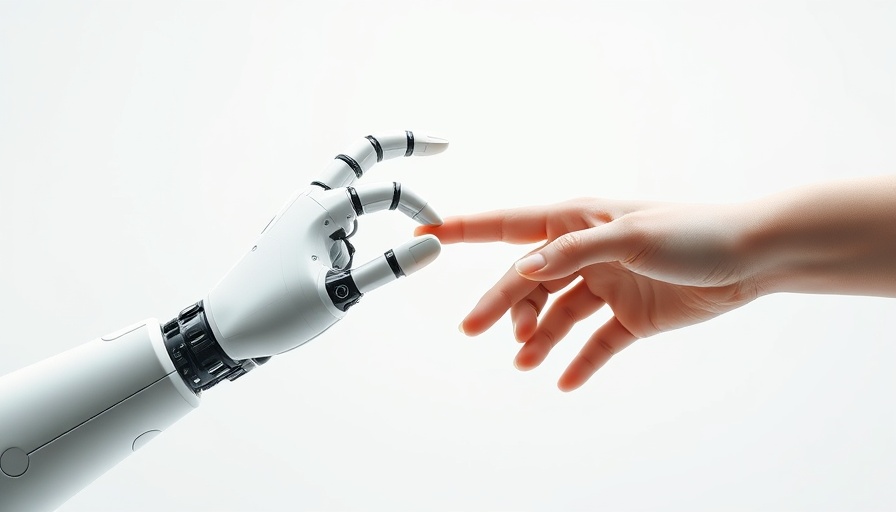
The Human Element in AI Change Management
In today’s rapidly evolving technological landscape, the integration of Artificial Intelligence (AI) into workplaces is becoming increasingly common. However, with these advancements comes an often-overlooked obstacle: the human element. An overwhelming number of AI implementations fail not because of technology but due to a lack of acceptance from the workforce. Companies must prioritize the emotional and psychological factors involved in the transition to AI if they wish to avoid pushback from employees.
A Common Scenario: The Resistance of the Workforce
Consider the story of a CEO who reached out to me in a state of panic after implementing AI-powered customer service tools. His top-performing agents felt threatened, fearing their positions were at risk due to automation. This story underscores a prevalent theme: resistance from employees is a common reaction when AI technologies are introduced without addressing their concerns. Many employees fear that AI will render their roles obsolete, leading to job insecurity.
In a similar case at an accounting firm, staff resisted a newly deployed AI system that dramatically improved accuracy in tax document processing. The technology was functioning smoothly, yet six months into the rollout, the employee usage rate languished at just 20%. This can largely be attributed to a fundamental lack of trust. Employees felt their specific expertise was being undervalued and undermined by an impersonal system.
Understanding Employee Concerns: More than Just Job Security
While job security is definitely a driving factor behind employee resistance, it is essential to understand that other concerns such as control over one's work and the accountability for AI's decisions play significant roles. Loan officers at a local bank resisted AI credit scoring tools, not out of fear of losing their jobs but due to apprehension about being held responsible for decisions made by an AI system. "What happens when the AI approves a loan that defaults?" they worried. This thought-provoking question highlights the nuance in employee fears.
Embracing a Human-First Approach
To effectively manage AI transitions, organizations need to embrace a human-centric approach. This means prioritizing workforce feelings and concerns ahead of technical specifications and configurations. A manufacturer that successfully integrated AI into their predictive maintenance strategy emphasized upfront communication with maintenance technicians. They invested three months gathering insights, leading to a shared understanding of how AI could enhance their performance rather than threaten it.
This model emphasizes collaboration and inclusion. Rather than imposing new technology on skeptical employees, companies should build networks of support and advocacy. The goal isn’t to simply replace processes, but to create a more cohesive and efficient working environment.
Leveraging Insights for Innovation and Improvement
When implementing any new technology, organizations must genuinely listen to their employees’ concerns, opinions, and experiences. It’s critical to showcase how AI can act as a tool for empowerment rather than a replacement for human skills. This can facilitate a smoother transition as employees begin to see AI as an extension of their capabilities, enhancing their productivity and job satisfaction.
Future Predictions: How AI Will Shape Workforces
Looking ahead, organizations that integrate AI thoughtfully will reap significant benefits. Transitioning toward an AI-supported workforce can enhance operational efficiencies, streamline processes, and open avenues for innovation. However, this will only happen if trust and transparency are at the core of the integration strategy. As AI continues to shape the workplace, it will be essential for managers and organizational leaders to keep their workforce engaged and informed.
Actionable Strategies for Successful AI Implementation
What actionable insights does this provide? Here are several strategies to facilitate a more positive reaction towards AI within your organization:
- Communicate Early and Often: Keep employees informed about AI initiatives and encourage open feedback. Address their concerns head-on.
- Train and Engage: Provide training to help employees understand AI technologies and their benefits, transforming fear into enthusiasm.
- Incorporate Employee Feedback: Actively involve employees in the development and deployment processes, making them stakeholders in the successful integration of new tools.
- Showcase Successes: Once AI is deployed, highlight accomplishments and improvements stemming from its use, reinforcing the benefits to the workforce.
Conclusion: Cultivating an AI-Ready Culture
Ultimately, the successful integration of AI within any organization hinges on its people. As companies navigate this complex terrain, it is imperative that they recognize the value of their workforce and actively participate in change management practices. Understanding the human factors at play can mean the difference between a thriving organization and one beset by resistance. Let's foster an environment where people feel valued, and in doing so, leverage technology to elevate both productivity and morale.
 Add Row
Add Row  Add
Add 



Write A Comment